Our Blog - Beaune, France
The town of Beaune is the wine capital of Burgundy. It is surrounded by some of the world's most famous wine villages, while the facilities and cellars of many producers, large and small, are situated in the historic center, as they have been since Roman times. Beaune is a walled city, with about half of the battlements, ramparts, and the moat, having survived in good condition. As you can imagine since it dates back to the Roman times, it is very old. The name Beaune comes from the Latinized Gallic word "Belena" which is the name of the spring around which the village is established. The name of this source comes from the patronage of the Gallic god Belenos, divinity of living waters. The oldest mention of the name of Beaune is found on a Merovingian coin bearing BELENO CAS [TRO] and in several writings as early as 664.
We'll start with wine ... we actually went to the village of Meursault for our Burgundy wine tastings. The town is known for the quality of its wines, mainly white wine and made from Chardonnay grapes. First stop at Caveau Moillard and Lucy was rearing to go ... she didn't realize that while puppies were allowing during the tasting, puppies were not allowed to actually TASTE the wine!


The next stop was Château de Meursault, which dates back to the 11th century. It probably had one of the loveliest sets of buildings and we had booked a tasting and tour of their caves. Unfortunately, we missed the line that said puppies were not allowed and so we ended up skipping that one. Instead, we went across the street to another, much smaller, vineyard. This one was actually a bit funny .... it was an older gentleman who, on some of the reviews, was a bit mean. However, for us, it was a little hilarious. Yes, he was a little rough around the edges ... but we got to taste 4 wines while he and Tom talked about assassination conspiracy theories surrounding JFK, especially with the Chicago mafia. Seems this French guy was interested in older American history and was happy to find a couple Americans to chat with about it. Needless to say, it stressed our French vocabulary (oh, did I mention this was ALL IN FRENCH)!
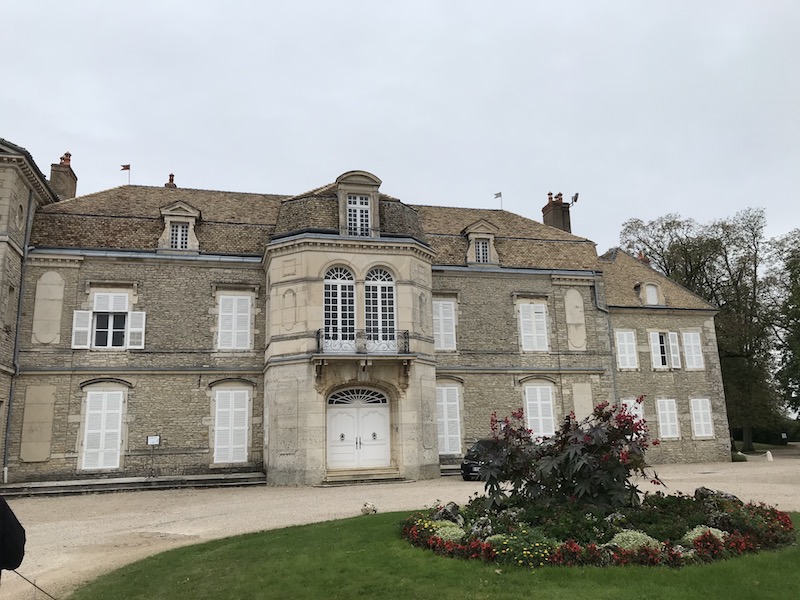
After packing our wines into the back of the car, we headed back to the Beaune. One of first stops was the tourist office, which was actually really good. They had displays with information about the wine and the unique particularities of the region. For example, in the 6th century, vines were planted on the slopes and difficult terrain. Why you might ask? Well, because there was a law that stated that "if someone plants vines on wasteland, then it belongs to those who planted the vines unless the owner previously opposed the move". Another interesting thing that you see as you drive through the area is that it is split into lots of little plots of land enclosed by walls. Each of these little plots of land is called a "clos", which starting from the Middle Ages, meant a vineyard surrounded by a wall or hedge. A large gate stood at the entrance, often guarded. To give you an idea, they had this picture ....

We then headed towards the ramparts, or city walls, following a map from the tourist office. Unfortunately, we were on the inside of the walls and everything has been built up so you really don't get a great view of the walls themselves. In some places, you can see the actual wall but in others, you couldn't see anything because we were basically at the top of the wall but there were also houses blocking the view of what was the moat. As we went around, we got to see the inside section of where a bastion was, but again, we didn't see the actual bastion. Next time, we need to find a walk outside of the wall.



Here is one tour that we were able to see, the Tour Blondeau, which was constructed around 1465.

The current Saint Nicholas Gate was built in 1770, replacing the old fortified drawbridge gate, known as Porte du Bourgneuf. It saw the arrival of many important figures: Henri II, accompanied by Catherine de Medici in 1548, welcomed by the cannons under a freshly painted triumphal arch, to the sound of tambourines; Charles IX accompanied by the queen mother made a brief stay in 1594 and the door was again decorated for the entry of Louis XIII, on his way to the Alps in 1629, then of Queen Anne of Austria the following year. But the most pompous entry was that of Louis XIV and the queen, on November 10, 1669.



I don't have much detail on this building, at 18 Rue de Lorraine, other than it is a historic building dating from the 17th century.
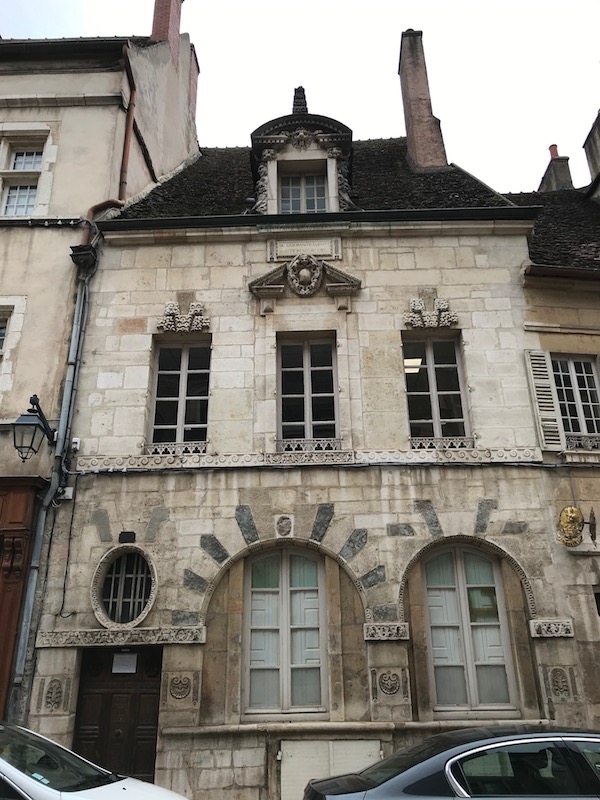

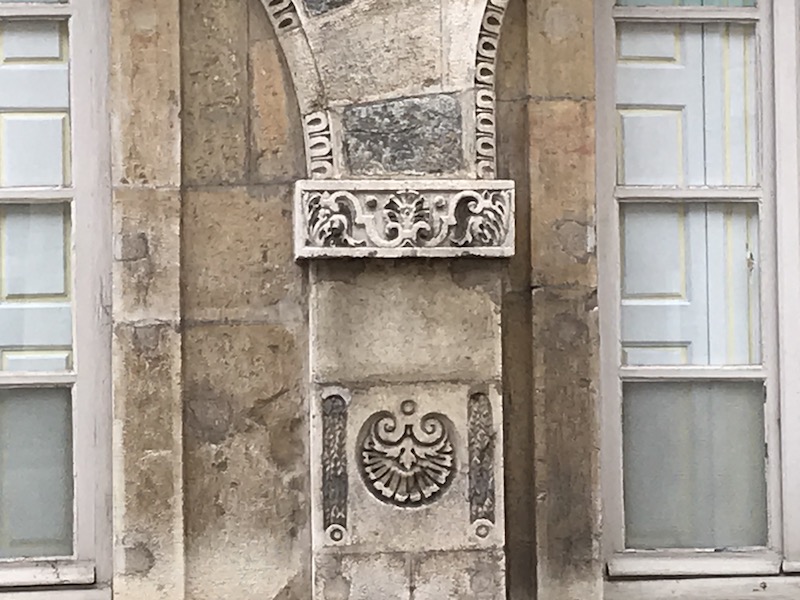
The Hôpital de la Sainte-Trinité de Beaune, the Hospice of Charity, is a former hospital built in 1645.


The clock tower was built in the 13th and 14th centuries. As of 1681, there was only 1 inhabitable floor as the weights for the clock needed the space in the rest of the tower. The other floors were added later. A stone staircase gives access to the first floor but then all of the others floors use wooden stairs.

We came up to the Basilica of Notre-Dame from the back, so you get a view from the nave (back), and then around the side before getting to the front. It is one of the last great Romanesque churches in Burgundy, dating to the middle of the 12th century. The chapels were added in the 13th and 14th centuries and the Gothic spire was replaced by an imperial roof in 1580.



Personally, the front is pretty bland compared to the view of the back of the church, where you can see the flying buttresses.

The interior has a pretty classical design, with high arches and side aisles with chapels. The stained glass is from 1898.

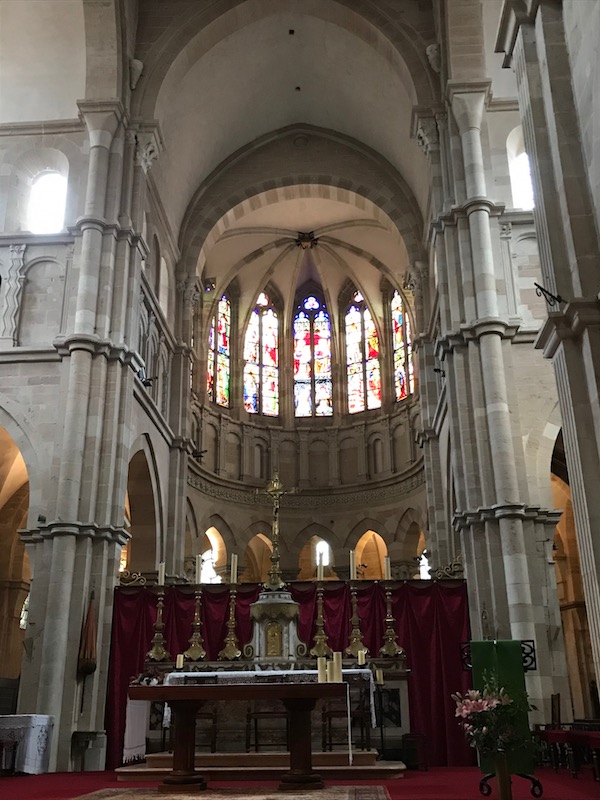

There is also a small cloister.


Before I get to the main sight in the city, let me talk just a minute about a particularity in Burgundy ... the roof tiles. Multicolored roofs are an integral part of Burgundy. These roofs, made of glazed flat tiles in colorful patterns, were seen as status symbols. Initially covering cathedrals in the 13th century, then princely residences of the 14th century, before becoming available to the rich urban bourgeoisie of the 15th century.

Finally, we made our way to the Hotel-Dieu, or the Hospice of Beaune. It is a Gothic-style building with probably the most amazing glazed-tile roof. It was founded in the 15th century and the relatively austere exterior façade contrasts with the richness of the decoration of the central courtyard, the roof, and the interior.


As you walk into the courtyard, you can definitely see the difference! There is quite a bit of Gothic ironwork and I took quite a few pictures of the various roofs. There is also a well in the middle of the courtyard with more Gothic ironwork.

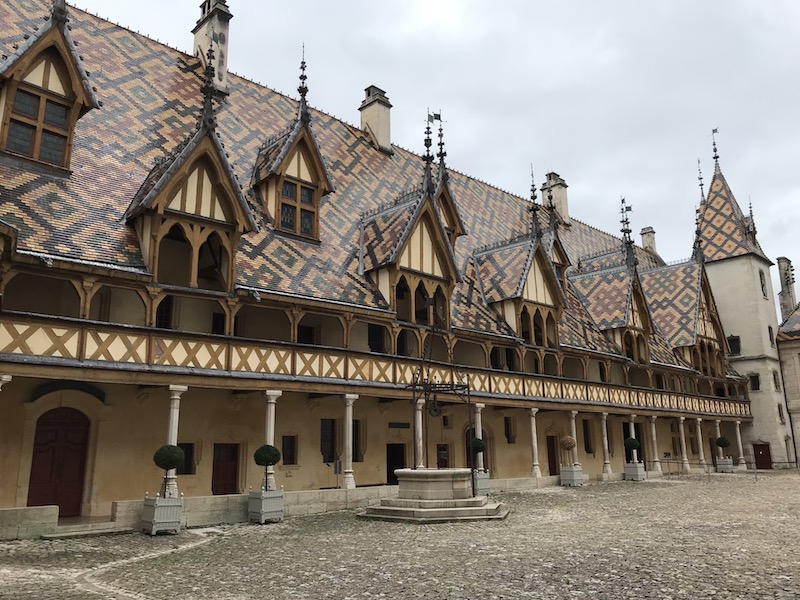



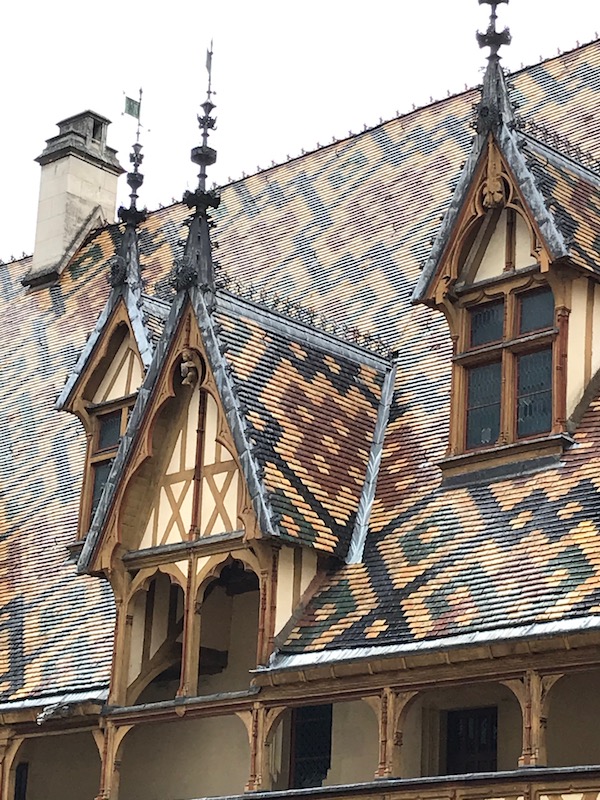
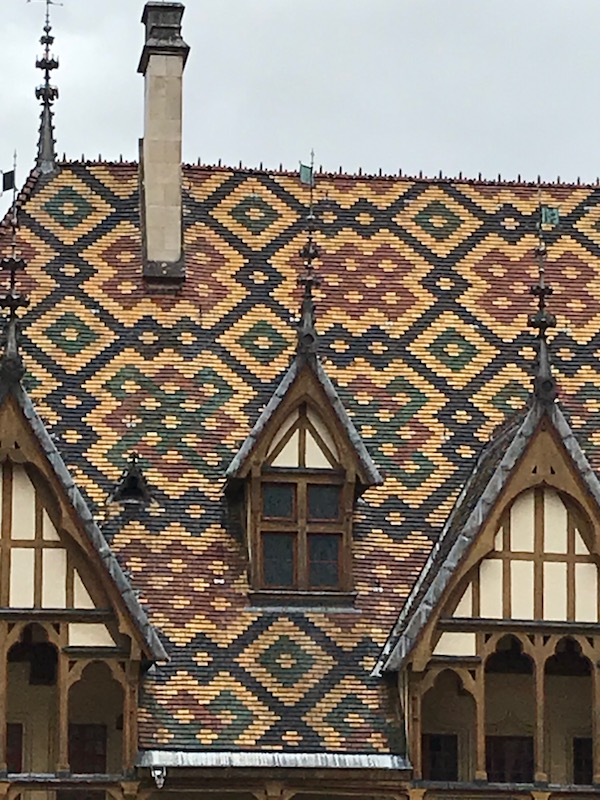

The largest room is the Salle des Pôvres, or room of the poor. While the dimensions are pretty impressive, the ceiling is probably my favorite part. It is covered with a visible painted frame and it looks like an overturned boat hull. The cross beams come out of the mouths of multi-colored dragons. Small sculpted heads, representing caricatures of the local bourgeoisie whose faces are accompanied by animal heads which symbolize their respective faults, are also found all along the roof.
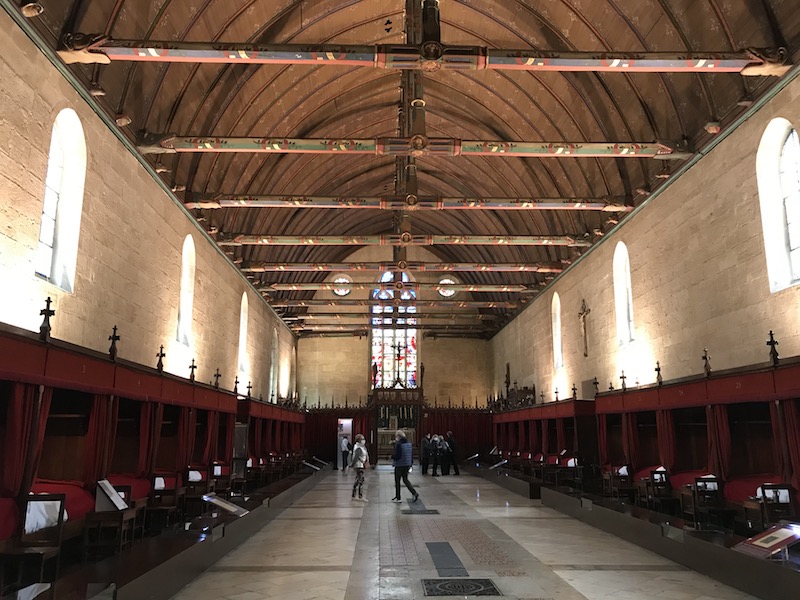





Lined around the walls are individual beds where the sick would be. Each bed has a chair and table. I also show a painting which gives an idea of how it would have looked with people there and nurses helping them.


At the end of the room is a small chapel, which shows the connection between the religious and medical aspects of the Hospice. I apologize for the slight blurriness of the stained glass.


Salle Saint-Hugues is also for sick individuals, but it was for those with a bit more wealth. You can see the large paintings showing various miraculous healings of Christ. The beds are a bit nicer as well, with shelves to hold personal objects and a rope that helped people sit up a little easier.

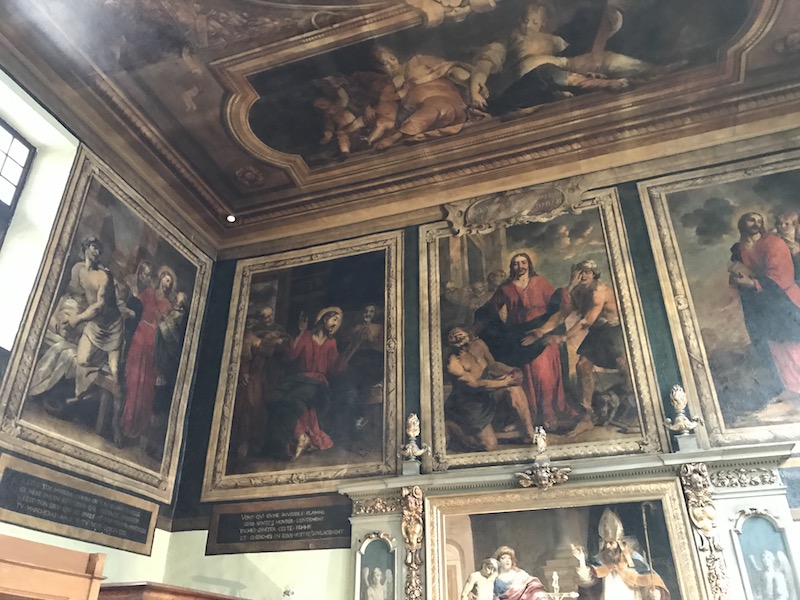
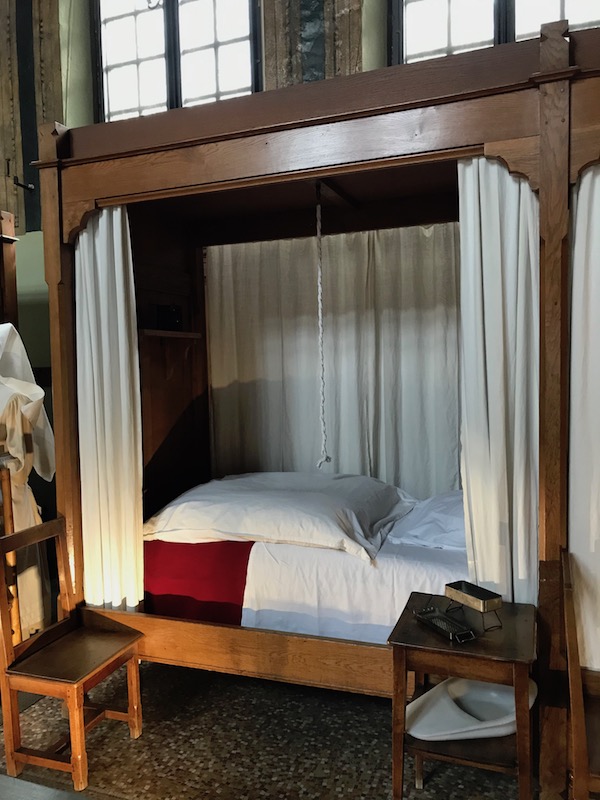
This is the Saint Nicholas hall and it originally was two separate rooms until they were joined in the 2nd half of the 18th century and was intended for the most seriously ill. Today, it has a nice exhibit of the history of the hospice. If you look closely, just above the bottom of the photo you can see a shiny area going across the picture. This is a glass, illuminated section which shows the neighboring river flowing under the room. This was how waste was evacuated from the Hospice and sent downstream.
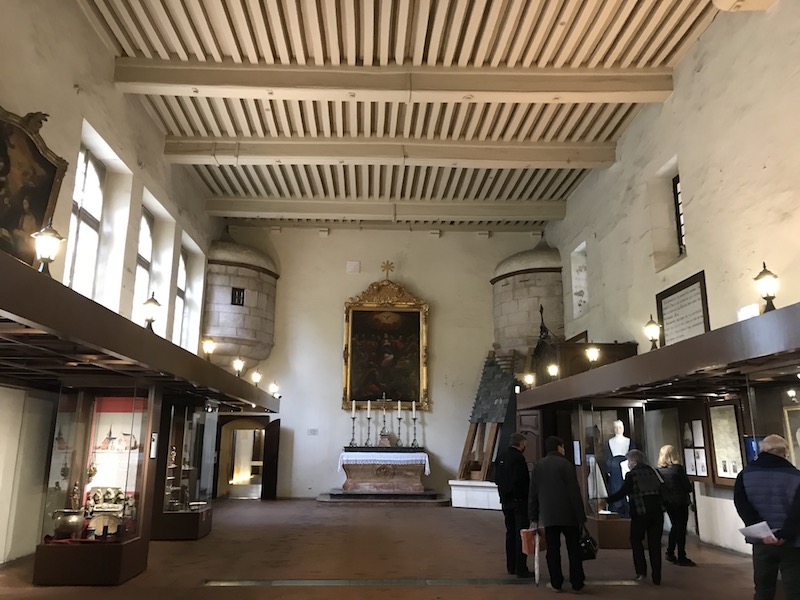
The kitchen actually had modern equipment until 1985 for the residents of the retirement home but has now been returned to what it would have looked like at the beginning of the 20th century. It has a large stove with 2 hot water faucets in the shape of swan necks. The huge fireplace has 2 hearths with a turn-spit from 1698.


The pharmacy has two small rooms with shelves of the shelves with glass and earthenware jars dating from 1782 in which medicinal plants, ointments, oils, pills and syrups were kept.



Dedicated to King Saint Louis, this room was built in 1661 on the site of a barn. It has Gothic vaults, a fountain, and two series of tapestries. This one tells the story of Jacob and was created in Brussels in the early 17th century.


There was also a set of furniture pieces including this sculpted walnut chest from the mid-15th century with rosettes set in Gothic arches.
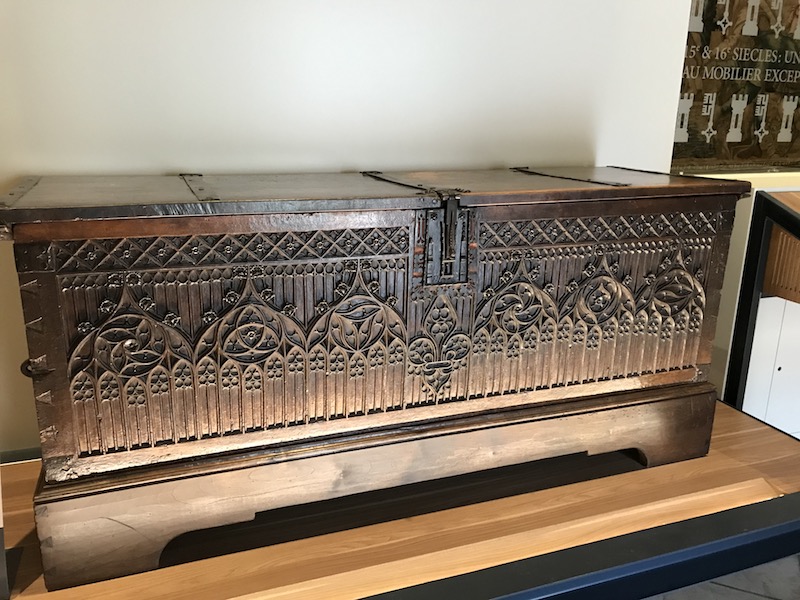

This chest is from the mid-16th century and is carved oak. It shows the baptism of Christ in the middle medallion, and has Indians crowned with fruits on the corners, which references the discovery of the Americas.
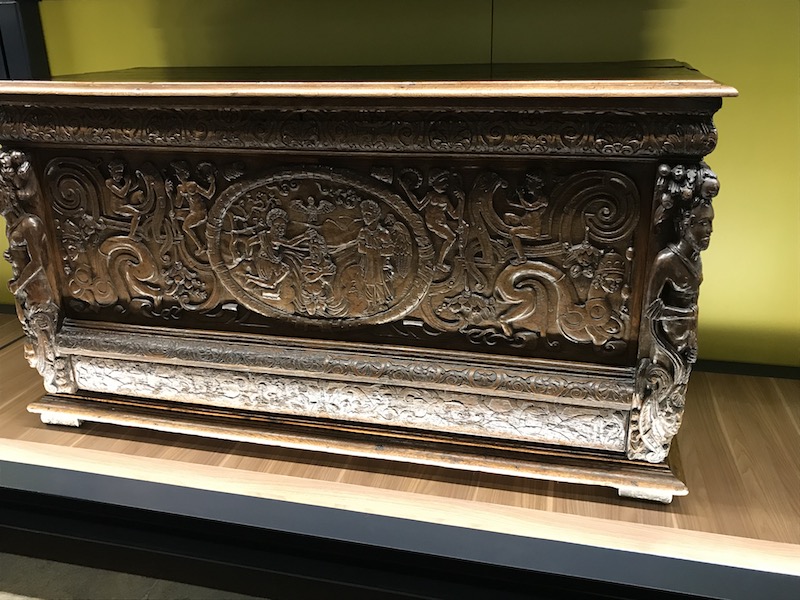


This stained glass window was created in 1912 using pieces of stained glass from the 15th and 16th centuries. The glass itself is old and the lead frame is newer.

This is the most famous piece in the Hospice, a remarkable 15th century polyptych of the Last Judgment by Flemish painter Rogier van der Weyden.


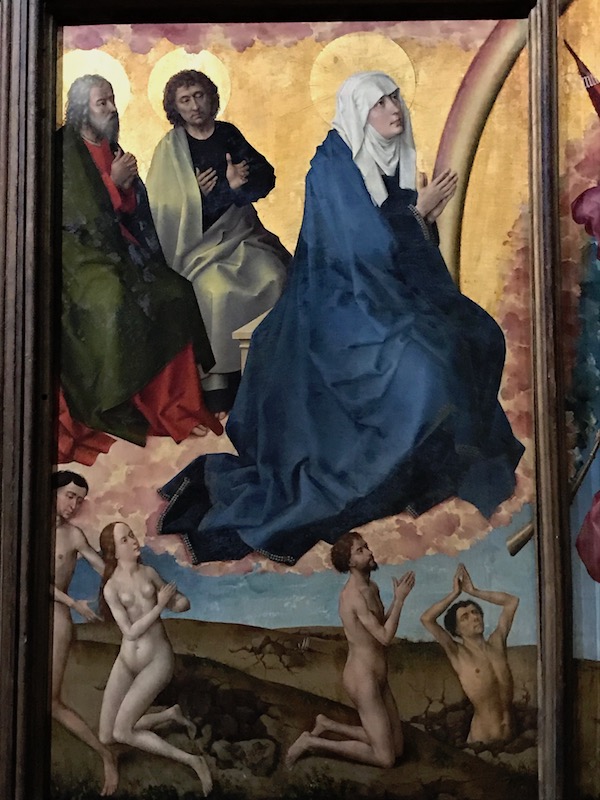




One thing that we didn't want to miss was a tour of the Fallot mustard factory. We were not allowed to take pictures during the tour, so I'll just talk about it a little bit. It has been an independent family business since 1840. The guide talked about how mustard is made with basically 2 or 3 ingredients: mustard seeds, verjuice (I'll explain this in a minute) and then optionally flavorings and spices. Verjuice is a mixture of vinegar, water, and salt. The word verjuice comes from vertjus, literally green juice, and comes from pressing unripe grapes or sour fruit. Now, most of the verjuice in France is white wine vinegar. We also learned about the mustard seed and that while a majority is imported, their company has been attempting to revive the cultivation of mustard seed.

Then we got to walk through part of the factory itself. The seeds are cleaned and then are steeped with the verjuice. They then get ground into a paste and put through a sieve to separate any residual pieces of the husks (except for ancient or grainy mustard varieties). Then it is stored so that, as it ages, any bitterness goes away.